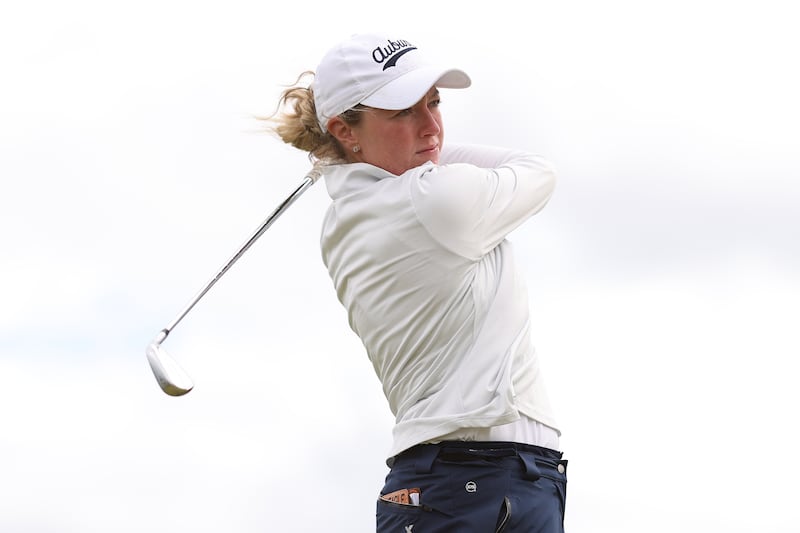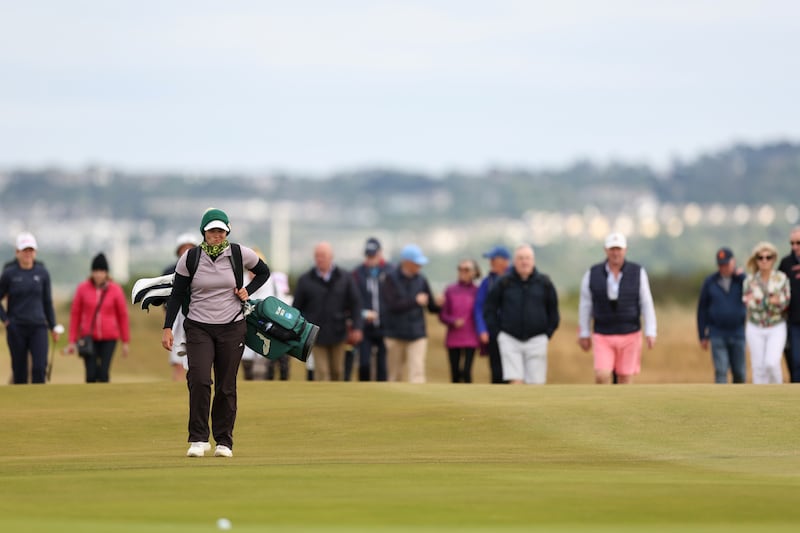The sound is what strikes you most. Pure, time after time after time.
One of the great things about the R & Women’s Amateur Championship at Portmarnock Golf Club this past week has, for spectators, been the chance to walk the fairways, to frame the greens and to get up so close to the players that there is an audible whizz of club swinging through air and, then, that pure strike of clubface hitting golf ball.
Another great thing? That women, again, are playing this wonderful north Dublin links – the championship was last staged at Portmarnock in 1931 – while the male-only membership policy, finally removed in 2021, has allowed it to resume hosting prestige events, like this one, and with the possibility in future years of professional championships, among them the AIG Women’s Open and, indeed, The Open itself.
That’s for another time (with the R & putting such matters very much on the table) but, for sure, the throwback to old style golf with spectators – and large crowds have attended – which reminded us, if needed, of just what a special venue is located on the doorsteps of a big European capital city.
The Irish interest was alive for much of the week with seven home players making it into the knockout phase, a further indication of the strong growth of the game and the conveyor belt of talent that now exists, but finished with Anna Foster’s exit at the quarter-final stage to Sweden’s Louise Rydqvist.
The Elm Park player’s last act of a fine campaign was to hug and congratulate her conqueror on the 16th green, just as the strong wind brought with it the musical sounds of the band gearing up for the Shania Twain concert at Malahide Castle.
“Getting to the quarter-finals, I would have bitten your hand off and to be the last Irish girl for a few rounds felt a bit special,” said Foster, a student at Auburn University and the current Flogas Irish Women’s Amateur Open champion.

She admitted to some element of tiredness after negotiating two rounds of stroke play qualifying and then advancing through to the last eight of match play.
“Anyone who was left at this point was going to be fatigued. It was more just the adrenaline was getting me through.”
So, no Irish name to be added to the famed trophy on its return to Portmarnock. The last – of eight Irish players to lift the silverware since it was first played in 1893 – was Leona Maguire, in 2017, and a large poster image of the Cavan star (who has said a possible staging of the AIG Women’s Open there would be “phenomenal”) was in evidence beside the putting green where a shadowed silhouette on another banner wondered who would be the 2024 champion?
Indeed, that putting green was horse-shoed by 34 flagpoles – starting with Argentina’s flag and looping around to that of Wales – of those competing, reminding us of the international scale of this championship which has proven, mostly in recent years, to be a pathway to the LPGA Tour and the Ladies European Tour as the days of career amateurs have gone.
These players are mainly young, many of them students at colleges in the United States, and one of the quarter-finals proved this point. Beth Coulter, who exited the championship at the last-32 stage on Wednesday, had assumed caddying duties for her friend, Germany’s Paula Schulz-Hanssen, both students at Arizona State, while American Mel Green, a student at South Florida, carried her own bag in advancing onwards.

All of them were following in legendary footsteps and making their own bids for glory: this links has produced champions like Arnold Palmer and Sam Snead (in the Canada Cup, which became the World Cup) and Irish Open winners among them Bobby Locke, Ben Crenshaw, Seve Ballesteros, Bernhard Langer, Ian Woosnam, José María Olazábal and Michael Campbell.
And of the 144 players who set out with hopes and expectations last Monday on the famed links, among them world number one amateur Lottie Woad, who led the stroke play qualifying before departing in the last 16 on Thursday, the field has been whittled down to just two: Green, who defeated Danish teenager Marie Eline Madsen, and Scotland’s Lorna McClymont, who overcame Rydqvist, in their respective semi-finals to make it to the 36-hole final.
A long week getting longer, but exactly where they would want to be. And time for more of those pure strikes sounds for those golf spectators to appreciate on a links that has given so much over the ages and surely set for even bigger things in the years ahead.



















